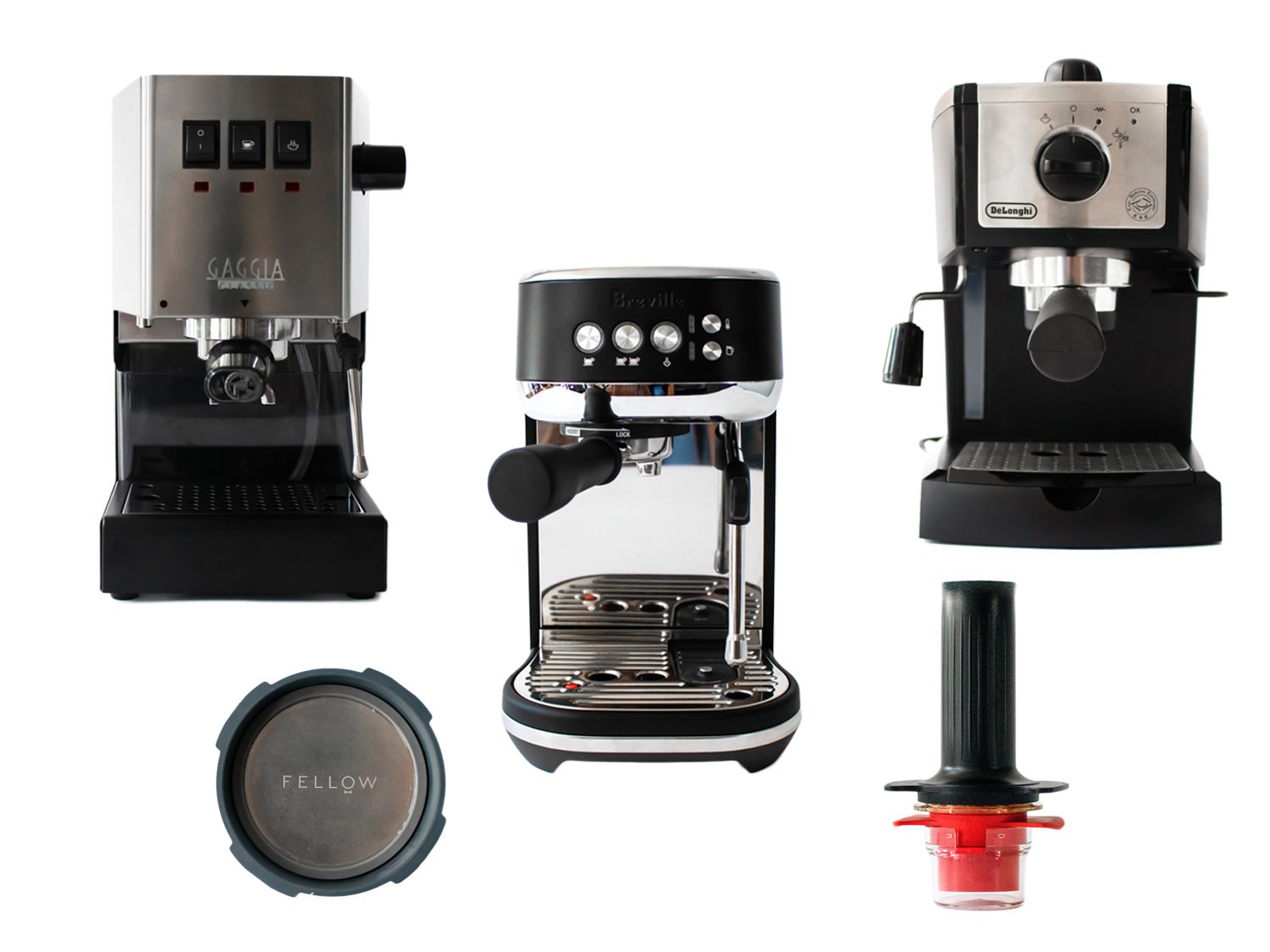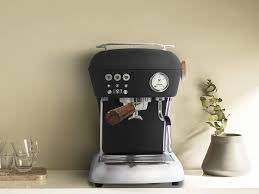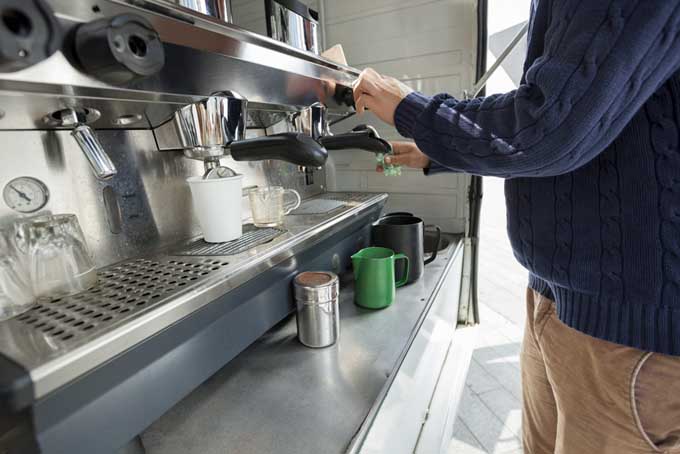Is Using Espresso Machines Safe?

Are you considering installing an espresso machine in your kitchen but are concerned about the potential health and safety risks?
While industrial espresso machines in coffee shops and restaurants might cause ergonomic problems for employees who use them frequently, personal espresso machines are generally safe.
Because all espresso machines run on electricity and use hot water and steam, remember a few things when using them. While there have been occasional stories of malfunctioning equipment in the past, technology continues to advance to lessen the chance of similar mishaps in the future.
In this essay, I’ll go through the elements to consider while buying and using an espresso machine so that you and your family are as safe as possible.
Materials for the Best Espresso Machine

Metal and plastic are the two main elements found in an espresso machine.
Which of those materials to employ depends entirely on the function of that specific component. An espresso machine’s water tank, for example, must be conveniently removable so that it may be transported to the sink and filled. Plastic is the finest material because it is light and easy to remove. Plus, it would be inexpensive to repair if you dropped your water tank. My Budget Recipes reader favourites
Plastic, on the other hand, has several drawbacks. When exposed to heat, it is prone to stains and poor ageing and degradation. An espresso machine’s body may get rather hot, and the last thing you want is for a plastic body to deform as it heats up. Metal would be a better option in this case.
Metal is required for a water boiler, for example. Stainless steel is commonly used because of its resistance to water damage and its strength. You’ll be heating water to near-boiling temperature in the boiler of an espresso machine frequently. As a result, you’ll need to choose a heat- and pressure-resistant material. Metal, to be precise.
Is It Possible To Become After Using An Espresso Machine?
It’s doubtful that an espresso machine will make you sick. Human error is largely to blame for the items that make you sick.
Let’s imagine you decide to use the steam wand on an espresso machine to heat some milk and then forget to purge the steam wand when you’re done.
The milk in the wand will condense and be brought back to the boiler as it cools. If left at room temperature and not cleaned, milk in the boiler will encourage bacterial growth. Using this water to prepare drinks, on the other hand, will make you sick.
Another thing to consider is where the steam from your machine goes in the kitchen. An espresso machine may fit beneath a cabinet or into a corner. In this circumstance, steam may condense on the surfaces, promoting fungal development.
Spores and poisons from this fungus can be particularly problematic in modern dwellings that are extremely well insulated and have no airflow. To avoid this, regularly clean the area around your espresso machine using a strong but food-safe kitchen cleaner.
How Often Should Your Espresso Machine Be Cleaned?
Different parts of your espresso machine require different cleaning schedules.
An espresso machine’s steam wand, for example, needs to be cleaned every time it is used. Which of those materials to employ depends entirely on the function of that specific component.
After each usage, you can give the rest of your espresso machine a quick clean down, but it should be fine. However, remember to empty and clean your portafilter basket after use; otherwise, mould spores may infiltrate your espresso machine.
Your espresso machine will require a deeper clean on a semi-regular basis. The water tank and the shower screen are the two sections that will need to be cleaned every month.
If you use hard water, the water tank and any pipes that convey water through the machine are prone to limescale accumulation. Limescale deposits are terrible for your health, the flavour of your coffee, and the pump in your machine, which will have to work harder to push water into your cup.
The shower screen is an often-overlooked component of an espresso machine that also benefits from regular cleaning. If you look at your espresso machine’s group head, you’ll see a piece of metal about the size of a CD with a bunch of small holes in it.
The shower screen looks like this. It should be kept in place by a central bolt that can easily be undone. The coffee in your portafilter will clog the little holes in your shower screen over time. As a result, other holes in the screen will be used more frequently, resulting in uneven water distribution and bad espresso.
What Is The Most Appropriate Cleaning Method For An Espresso Machine?

Cleaning your espresso machine is, thankfully, a simple task.
A wet cloth will suffice for your daily cleaning activities, which should be completed after each usage. You should generally remove anything from the machine manually, so if your cloth is abrasive, a little elbow grease should suffice.
When cleaning your steam wand, remember to let it warm up for two or three seconds before purging. This will ensure that the extremely hot steam sterilises the inside of the desire entirely. Allow it to cool before approaching it again.
It’s a good idea to clean the shower screen first while doing your monthly cleaning. Remove the bolt that holds it in place and thoroughly wash it with hot, soapy water. The holes will be unclogged as a result of this. Before screwing it back on, make sure it’s absolutely dry.
A large range of consumer goods is available to descale your machine. They’ll usually come in the form of a powder or a sachet of liquid that you mix with water to make a descaling solution. I usually fill the tank of my espresso machine with water, then add the sachet, powder, or liquid, and wait a few moments for the chemicals to dissolve.
Then I use the steam wand to pump half of the tank through the group head and the group head to pump the other half. To clean it out, I fill the tank halfway with clean water and pump halfway through the group head and halfway through the filter.
How To Use An Espresso Machine Safely
It is critical to use an espresso machine carefully. They’re just pressure vessels that are connected to the power grid. When you phrase that, you can see how dangerous they are. Electrocution and burns are the two most serious risks of using an espresso machine.
Avoiding electrocution when using one is similar to electrocution when using any other electronic device. It can not be used in a damp area, and before turning it on, check sureIt can not be used in a damp area, and before turning it on, check if the plug is properly inserted into the socket.
When it comes to burns, the recommendations are a little more specialised. You can get burned by an espresso machine in two ways: hot water or steam.
If you’re cleaning out the group head, for example, you can be putting your hands in the line of hot water about to exit the machine. Before getting started, check sure the machine is turned off and unplugged. If this is not the case, you may unintentionally knock the pump switch and pour hot water over your hands.
When using the steam wand, be careful not to get burned by the hot steam. Steam burns are very unpleasant, so try to prevent them as much as possible.
Always point the steam wand away from you and down at the counter, and never, ever put your hands in front of it. Because steam wands use a valve that opens and closes gradually, there’s a potential they won’t be entirely closed when you turn the machine off.
In such a situation, you may find yourself with a steam wand leaking extremely hot water and steam when the machine heats water to make steam. In that scenario, press the steam wand until it’s in a safe position with a towel or a cloth, then turn the dial entirely closed. Always make sure the steam valve is completely closed to avoid happening.
Make the thing safe as soon as possible if you get a burn, whether it’s from steam or water, and then take the burned portion of your body straight to a tap.











